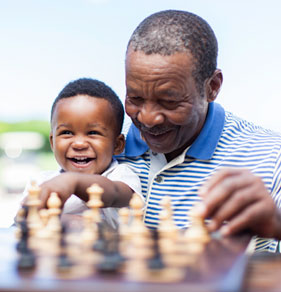February 14, 2019
According to Kansas State University, “International Journal of Behavioral Nutrition & Physical Activity;” individuals who sat for over 4 hours at a time were significantly more likely to report chronic illnesses. This information does not come as a surprise, and it enhances the importance of implementing a Walking Partners Program for you and your family to help improve quality of life.
Walking programs have been demonstrated to be especially effective in helping to maintain older adults’ mobility, balance, muscle tone and overall physical viability where participation levels are consistently high.
Assimilating a walking program for yourself, your family and even your neighborhood is easier when you have consistency and accountability, such as a walking partner. Integrating a walking program can be simple if you stick to the following guidelines provided by The Institute of Preventive Foot Health along with the ICAA:
- Understanding the importance of preventive foot health is vital. Identifying reputable specialists (podiatrist or orthopedic doctor) in your community for an initial foot assessment will help ensure you and your loved ones are wearing proper fitting shoes. A good source for more in-depth information is the Institute for Preventive Foot Health.
- Consider the use of a pedometer. They come in all shapes and price ranges. Inexpensive ones are great to start with to simply count steps, and as you progress, you may wish to utilize various apps and devices for your phone that fits your activity needs.
- Identify and broadcast three routes that accommodate all fitness levels for 10 weeks. Think of scenic parks, historic areas or indoor mall walking for climates where the heat is unbearable. Frequency and progression is the formula for you to see results. Exploring your city will keep your routes interesting and give you enjoyment that you may not seek out otherwise. Consider incorporating themes (i.e., garden walk), strength and yoga into your walks to attract family, neighbors and community members to join in on the fun!
- Tracking and measuring will keep you motivated, so consider ways to log your steps over the 10 weeks and reward your walking team at the end for the most steps averaged.
Remember, FUN needs to make a comeback! No amount of discipline and willpower can replace an experience that is fresh, engaging and really fun. Have fun creating and implementing your own Walking Partners Program.
Step Stats
- 2.5 feet: average person’s stride length
- 2,100 average steps: about one mile
- 10,000 steps: about 5 miles
- 10,000 steps: expends about 300 to 400 calories (depending on body size and walking speed)
- 1,200 steps: 10 minutes of walking
- 3,100 – 4,000 steps: 30 minutes of moderately intense walking
Note: All these equivalents are averages that will vary among individuals. Sources: Research Digest, Walking.about.com
How Many Steps for an active lifestyle?
Sedentary: <5,000 steps/day
Low active: 5,000 – 7,499 steps/day
Somewhat active: 7,500 – 9,999 steps/day
Active: > or = 10,000 steps/day
Highly active: > 12,500 steps/day
Source: Tudor-Locke C, Bassett DR Jr., Sports Medicine
Tracey Harvey
National Program Director of Wellness Services
EnerG® by Aegis Therapies
Aegis Therapies is a nationally recognized leader in contract rehabilitation and wellness services with more than 7,500 therapists and clinicians providing therapy services in over 1,400 facilities across 41 states. Harvey has more than three decades of experience in the Fitness/Wellness/Retirement Living Industry, and champions evidence-based programs across the nation in order to increase overall results using aspects of innovative business development tactics to drive quality, consistency and successful outcomes.
All content provided on this blog is for informational purposes only and should not be taken as medical, emotional or other type of advice. Aegis makes no representations as to the accuracy or completeness of any information on this site or found by following any link on this site. Aegis will not be liable for any errors or omissions in this information nor for the availability of this information. Aegis will not be liable for any losses, injuries, or damages from the display or use of this information. Each individual is unique; therapy and wellness progress and outcomes will vary depending on the individual.
Sources: GenCare Lifestyle/Institute of Preventive Foot Health/ICAA Walking Partners Guidelines







